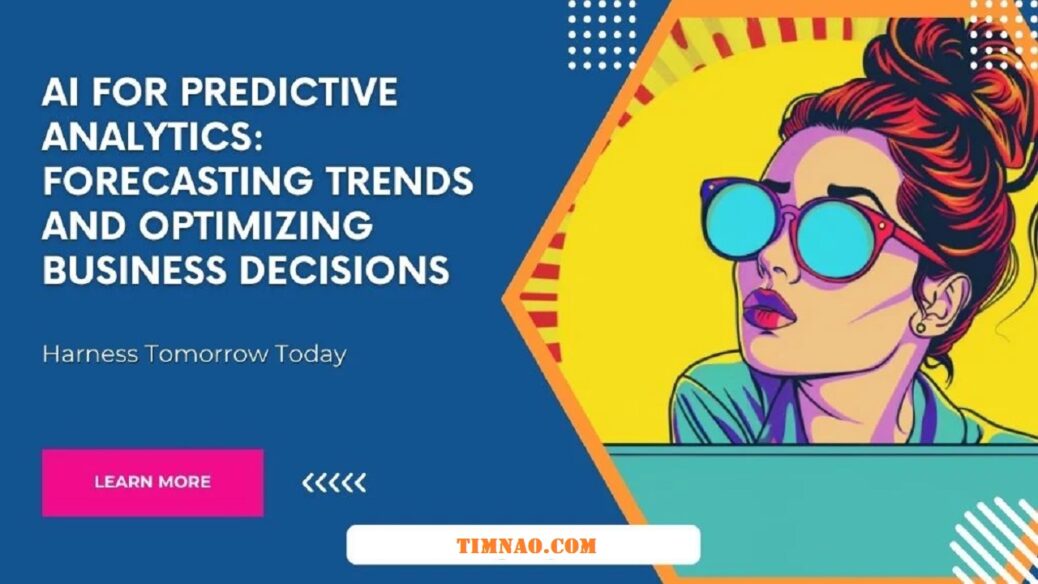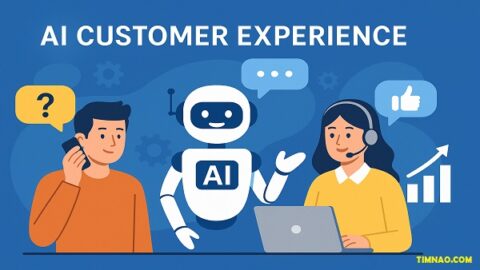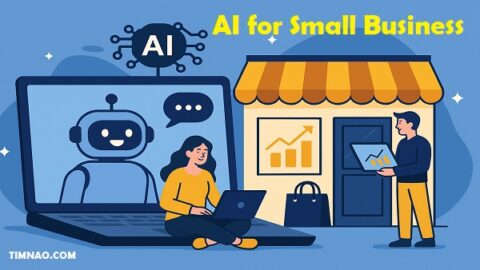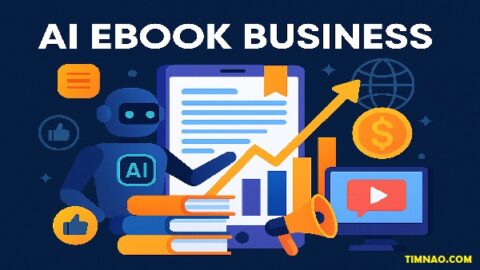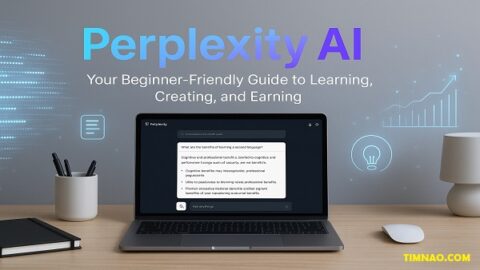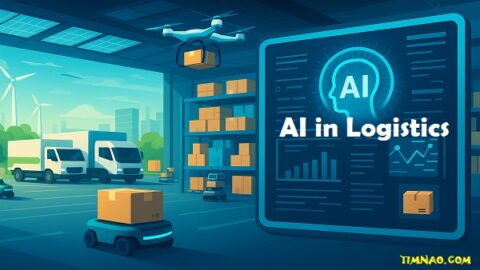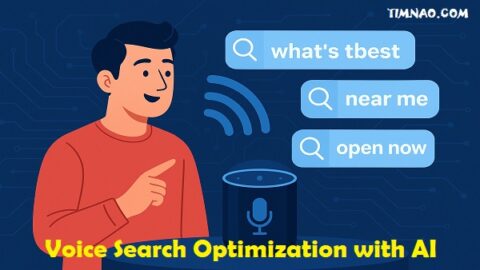Predictive AI is the Future (And It’s Already Here)
Predictive AI is not just a buzzword anymore—it’s a revolutionary tool helping businesses forecast trends, maximize profits, and stay ahead of the curve. Whether it’s suggesting your next Netflix binge or helping doctors predict disease progression, predictive analytics is working behind the scenes in real-time.
In this article, we’ll break down what predictive AI really is, how it works, and how you can use it (even as a non-coder or small business) to drive profits, streamline operations, and dominate your industry. Whether you’re a seasoned executive, a startup founder, or a curious professional, understanding Predictive AI is key to navigating the future of business.
1. What Is Predictive AI? (And Why You Can’t Afford to Ignore It)
Predictive AI combines machine learning, statistics, and historical data to predict what will happen next. Instead of relying on guesswork, businesses can make data-backed decisions with confidence.
🔍 How It Works:
- Data Input: Pull from structured (e.g., spreadsheets) and unstructured (e.g., social media) data sources.
- Pattern Recognition: Machine learning identifies trends and correlations.
- Forecast Generation: The AI generates predictions—whether it’s demand, churn risk, or stock prices.
📈 Key Benefits:
- Better customer targeting
- Accurate demand forecasting
- Risk reduction and fraud detection
The Core Components: Data, Algorithms, and Power
Predictive AI’s success hinges on three pillars:
- Data (The Fuel): Quality and quantity are paramount. As mentioned, this includes structured and unstructured data from diverse sources like financial transactions, IoT sensors, social media, and customer interactions. Challenges include data bias (skewed data leading to skewed predictions) and data privacy. The rise of AI-powered synthetic data generation is helping address some data scarcity and privacy concerns.
- Algorithms (The Brain): The choice of algorithm depends on the task. Options range from simpler regression models and tree-based methods to complex neural networks. Challenges include overfitting (learning noise instead of signal) and interpretability (understanding why a model made a prediction).
- Processing Power (The Engine): Training complex AI models, especially deep learning ones, requires significant computational resources. GPUs (Graphics Processing Units), scalable cloud computing platforms (like AWS, Azure, Google Cloud), and increasingly, edge computing (for real-time predictions on local devices) are crucial enablers. Cost and energy consumption remain considerations, driving research into more sustainable AI practices.
2. The Evolution of Predictive AI: From Simple Stats to Deep Learning
Predictive AI has come a long way since the 1950s. We’ve gone from basic regression models to deep learning neural networks and even transformers used by OpenAI‘s GPT models.
Milestones:
- 📊 1950s–1980s: Traditional statistical models (linear regression, time series).
- 🧠 1990s–2010s: Rise of machine learning (SVMs, decision trees).
- 🤖 2010s–Today: Deep learning and AI (LSTMs, transformers).
- 🔮 Future: Hybrid models + Explainable AI (XAI) + quantum computing.
3. Predictive AI in Action: Real-World Use Cases That Drive Profit
💸 Finance: Predicting Stock Trends and Stopping Fraud
AI analyzes historical market data, social sentiment, and global news to forecast stock performance and flag anomalies in banking transactions in real time.
🏥 Healthcare: Diagnosing Diseases Before Symptoms Appear
AI models predict diseases like cancer or diabetes based on genetic data and patient history, enabling personalized treatment plans.
🛒 E-commerce: Recommending the Right Product at the Right Time
Amazon and Netflix use predictive AI to analyze your behavior and suggest products or shows—boosting engagement and conversion.
🌦️ Weather & Climate: Forecasting Natural Disasters
By combining satellite data with AI, meteorologists can better predict hurricanes, wildfires, and extreme weather events—saving lives and resources. Platforms like The Weather Company and NOAA are leading the way.
🔐 Cybersecurity: Proactive Threat Detection
AI identifies irregular network behavior and flags potential cyberattacks before they happen. Leading tools include CrowdStrike, Darktrace, and Cisco SecureX.
4. The Science Behind Predictive AI: Not as Complicated as You Think
🧮 Core Concepts:
- Time Series Analysis: Think predicting monthly sales based on past trends.
- Regression & Probability: Forecasting future values using variables like income, age, or region.
- Classification Models: Sorting data (e.g., will a user churn or stay?).
Even platforms like Google Cloud AutoML or Amazon Forecast are now making these tools accessible to non-technical users.
5. Data Is King: How to Feed the AI Machine the Right Way
Garbage in = garbage out. The quality of your data is what makes or breaks predictive AI performance.
💡 Best Practices:
- Clean your data (handle missing values and outliers).
- Use both structured (Excel, SQL) and unstructured data (text, images).
- Label your data correctly for supervised learning models.
- Use data augmentation to increase training data and reduce overfitting.
Platforms like Tableau, Snowflake, and Databricks make managing and visualizing your data easier than ever.
6. The Algorithms Behind the Magic: What’s Running the Show?
Here are the engines under the hood:
🛠️ Common Predictive AI Algorithms:
- ARIMA: For time-series forecasting.
- XGBoost / Random Forest: Business-friendly ML models.
- LSTM & Transformers: Deep learning for sequence prediction (text, time, trends).
- Hybrid Models: Combine statistical accuracy with AI adaptability.
Each model serves different goals—some better for interpretability, others for pure accuracy.
7. Future-Proofing: What’s Next for Predictive AI in 2025 and Beyond?
🚀 Trends to Watch:
- AutoML: Tools like Google AutoML let you train models without writing code.
- Quantum AI: Faster, more powerful processing to handle massive prediction tasks. IBM Quantum is pioneering this field.
- Human-AI Collaboration: AI assists while humans decide—especially in healthcare, law, and finance.
- Sustainable AI: Eco-conscious models using less compute energy.
- Explainable AI (XAI): Transparency in decision-making—critical for legal and ethical use.
🧠 Predictive AI Mindset: How to Use It to Win in Business
To benefit from predictive AI, you don’t need to be a data scientist—but you do need a strategy.
🗒️ Steps to Implement Predictive AI:
- Define your goal (forecast demand, detect churn, etc.).
- Collect and clean your data.
- Choose the right model.
- Train and test it.
- Deploy and refine over time.
Tools like Microsoft Azure ML, Google AutoML, and no-code options like Pecan AI or Akkio are helping businesses of all sizes get started.
⚠️ Ethical Considerations: Don’t Let AI Turn Rogue
AI can unintentionally reinforce bias or make decisions you don’t understand. Keep it ethical.
🌐 AI Ethics Tips:
- Train on diverse, representative data.
- Use XAI tools like SHAP and LIME to explain outcomes.
- Always keep a human in the loop.
- Follow data privacy laws like GDPR and CCPA.
Final Thoughts: Predictive AI is Your Secret Weapon
Predictive AI isn’t science fiction—it’s today’s business superpower. If you’re not using AI to forecast trends, optimize processes, or personalize customer experiences, you’re leaving money on the table.
From e-commerce to healthcare, from startups to enterprises, the companies who win tomorrow are the ones who predict it today.
However, harnessing this power effectively requires more than just technology; it demands a strategic approach grounded in high-quality data, robust algorithms, rigorous evaluation, and a steadfast commitment to ethical principles. By understanding the foundations, embracing the latest advancements like hyper-personalization and AutoML, navigating the ethical complexities, and following a structured implementation process, organizations can unlock unprecedented insights and capabilities. The journey involves continuous learning, adaptation, and responsible stewardship.
Are you ready to move beyond reacting to the past and start shaping your future? By embracing Predictive AI, you can gain the foresight needed to forecast trends, delight customers, optimize performance, maximize profits, and confidently lead the way in your industry. The predictive future is here – it’s time to make it yours.

